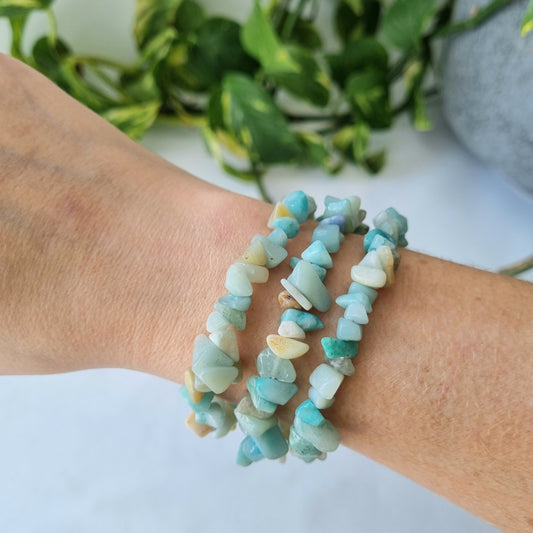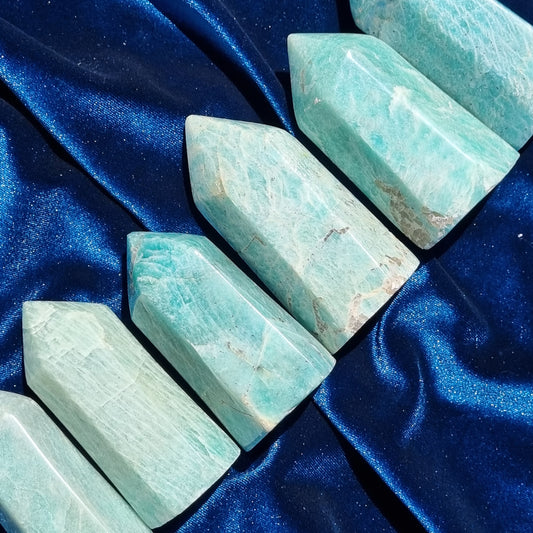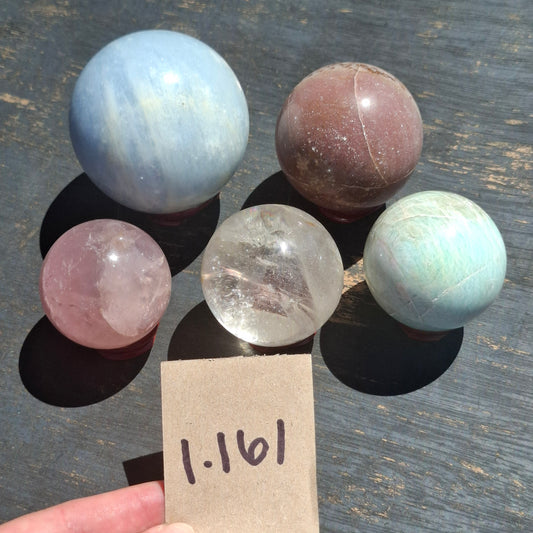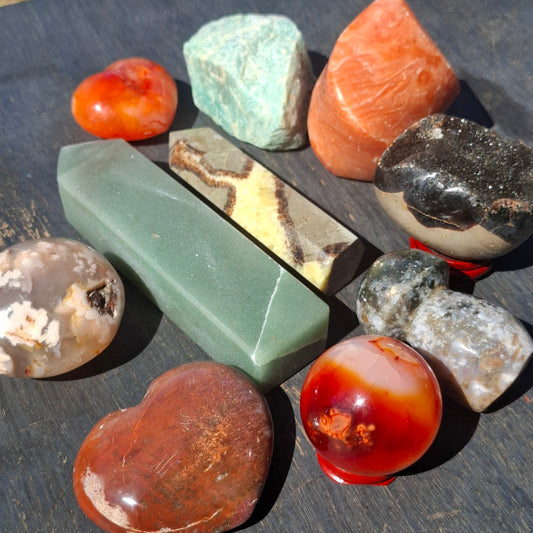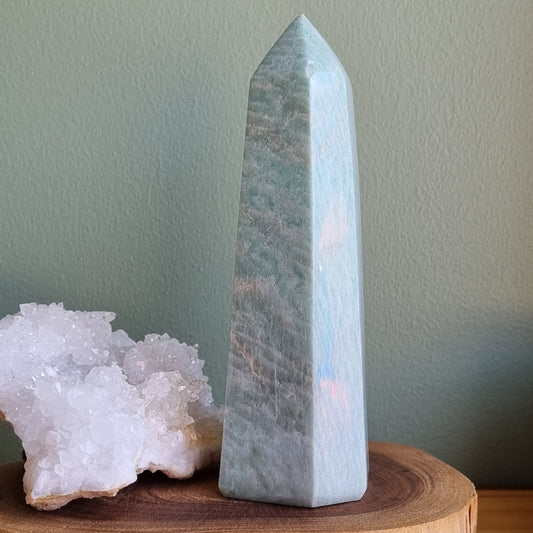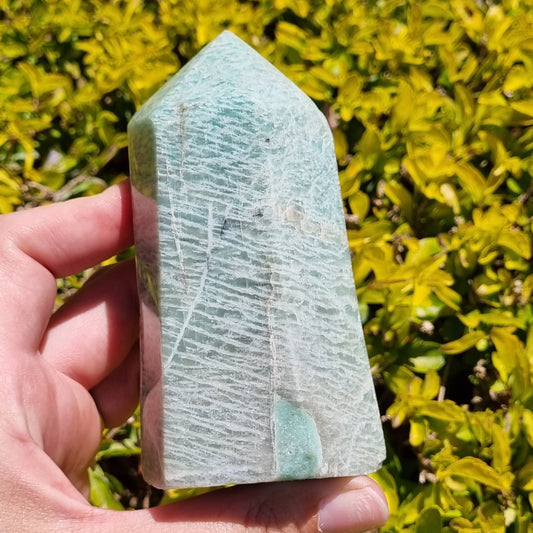Collection: Amazonite

Amazonite, with its gorgeous blue hue is best used as a stone for soothing. It has a gentle vibration and helps to settle erratic thoughts, calms the nervous system and aids in healing and health. It is also known as a stone of balance and filtration, helping you to get to the bottom of things and to see both sides of a problem or different points of view. It also encourages the balance of masculine and feminine energies.
It inspires us to discover our inner beliefs and helps us to live aligned to those beliefs with authenticity. Amazonite helps us discover our truth and encourages us to speak up with courage, but in a calm manner. It reminds us to be flexible and to go with the flow of life with hopefulness and an open heart. Its soothing energy also promotes positivity and serenity.
Amazonite is a great stone to use in meditation, particularly an amazonite palmstone you can hold on to. It will help your nervous system calm down, whilst promoting peace and serenity, which will help you reach a deep meditative state.
History
Its name is taken from that of the Amazon River from which green stones were formerly obtained, though it is unknown whether those stones were amazonite. Although it has been used for over thousands of years, as attested by archaeological finds in Egypt and Mesopotamia, no ancient or medieval authority mentions it. It was first described as a distinct mineral only in the 18th century.
It was obtained almost exclusively from the area of Miass in the Ilmensky Mountains, 50 miles southwest of Chelyabinsk, Russia, where it occurs in granite rocks
Amazonite is now known to occur in various places around the globe.
Geology
For many years, the source of amazonite's colour was a mystery. Some people assumed the colour was due to copper because copper compounds often have blue and green colours. A 1985 study suggest that the blue-green colour results from quantities of lead and water in the feldspar. Subsequent 1998 theoretical studies by A. Julg expand on the potential role of aliovalent lead in the colour of microcline.
-
Amazonite Chip Bracelet
Regular price $4.00 AUDRegular priceUnit price / per$5.00 AUDSale price $4.00 AUDSale -
Amazonite Tower - Madagascar - Smaller Sizes
Regular price From $7.48 AUDRegular priceUnit price / per$15.50 AUDSale price From $7.48 AUDSale -
Pastel Sphere Pack - Bulk
Regular price From $57.80 AUDRegular priceUnit price / per$110.70 AUDSale price From $57.80 AUDSale -
Earth Magic Mixed Crystal Packs - BULK
Regular price From $47.82 AUDRegular priceUnit price / per$76.30 AUDSale price From $47.82 AUDSale -

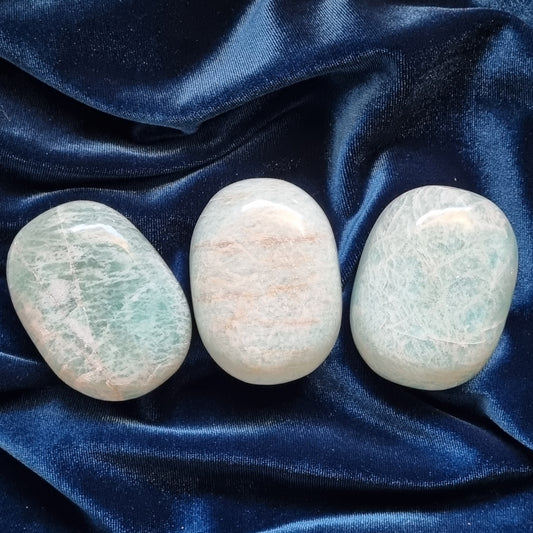 Sale
SaleAmazonite Palmstones
Regular price From $7.00 AUDRegular priceUnit price / per$13.00 AUDSale price From $7.00 AUDSale -

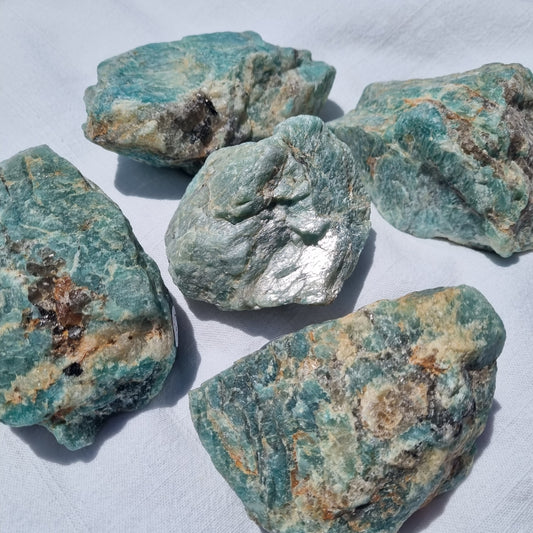 Sale
SaleAmazonite Raw
Regular price From $8.58 AUDRegular priceUnit price / per$13.21 AUDSale price From $8.58 AUDSale -
Amazonite Tower - Madagascar - 625g
Regular price $40.63 AUDRegular priceUnit price / per$84.22 AUDSale price $40.63 AUDSale -
Amazonite Tower - Madagascar - 410g
Regular price $26.65 AUDRegular priceUnit price / per$55.25 AUDSale price $26.65 AUDSale

